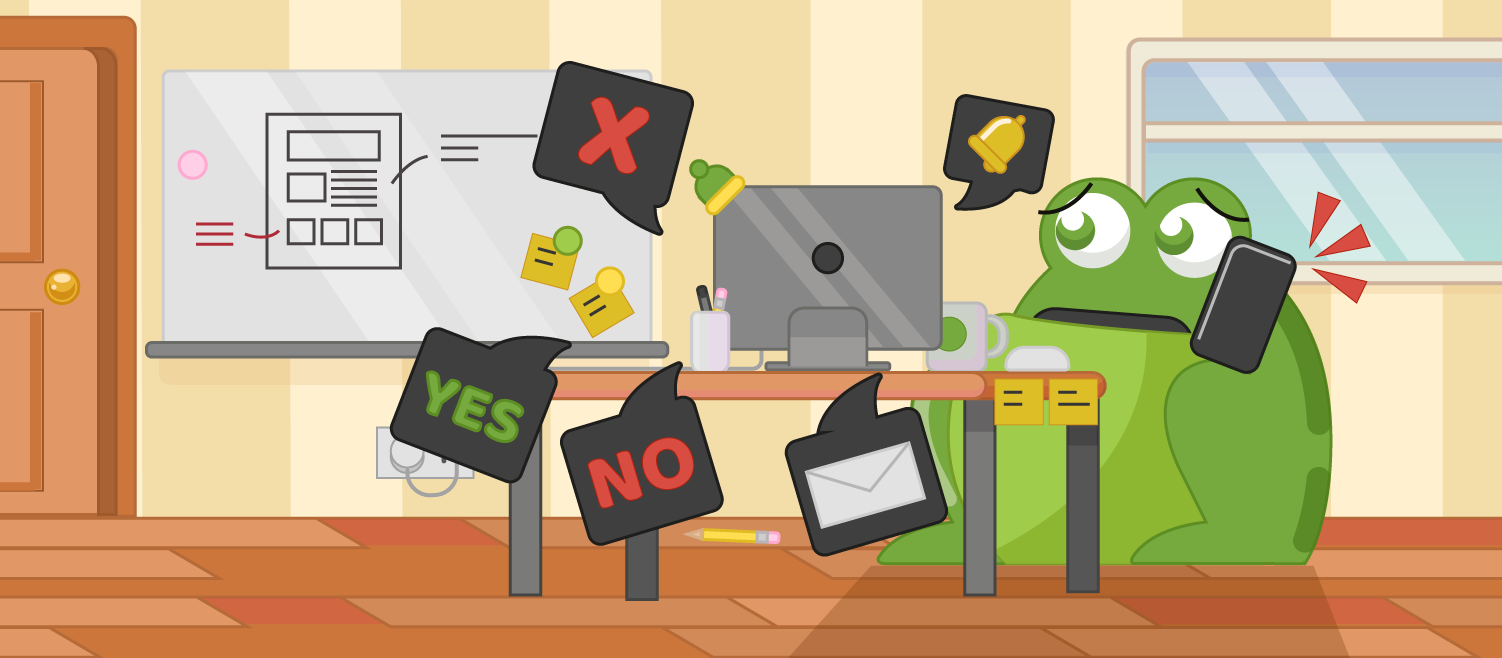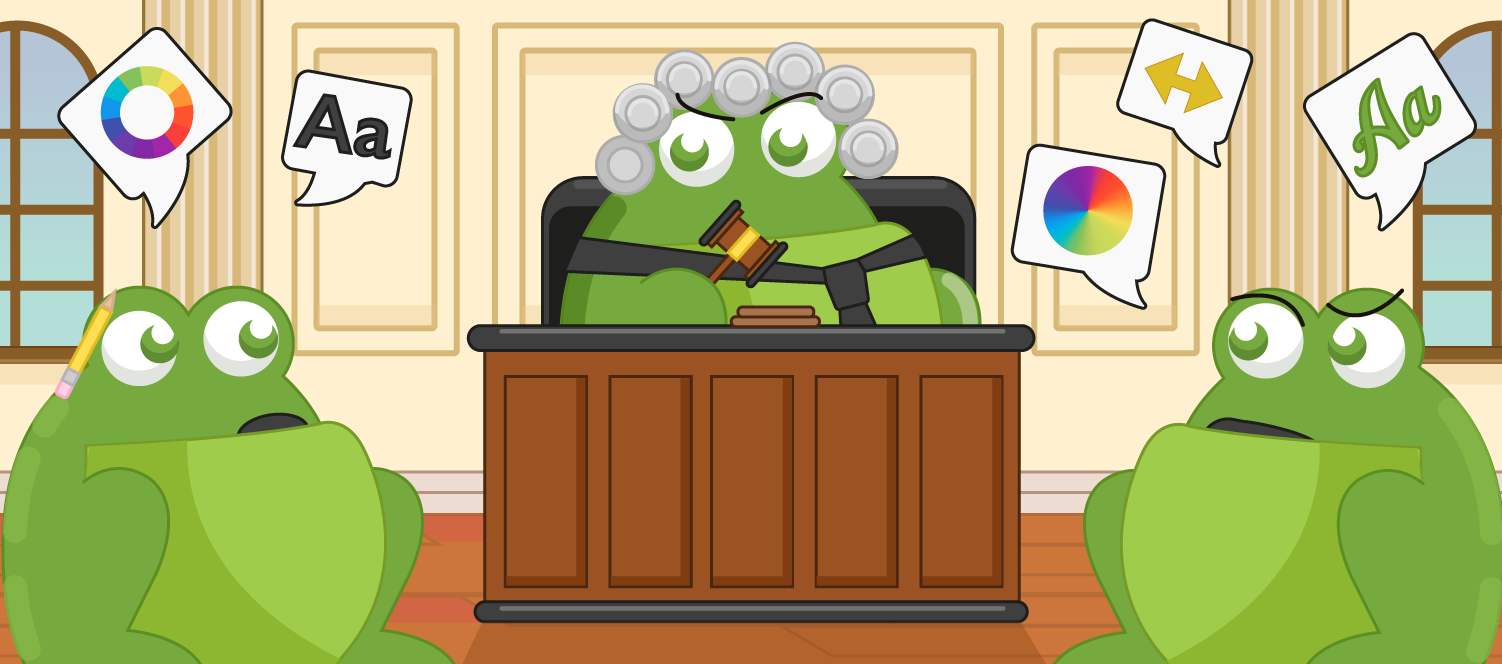When it comes to a design project – or any other creative endeavour for that matter – feedback is a crucial part of the process. Feedback is a formative process that gives a project direction, creates consensus amongst stakeholders, and ultimately makes the project the best it can be. Without feedback, projects are destined to fail. But, it has to be done right.
In this article, we’re going to explore what the best practices are to achieve effective feedback and how they can be implemented in your projects to create a final design that surpasses project objectives and exceeds the expectations of everyone involved.
- Who, what, where, when
- Feedback doesn’t have to be solutions
- Good feedback is actionable
- Try to be consistent and when in doubt, go back to the brief
- Don’t be too negative, don’t make it personal
- Conflict resolution
Who, What, Where, When
Feedback will often involve numerous participants or stakeholders, can refer to a multitude of design elements & assets, and be given through different mediums at different stages of the design process.
This can often lead to feedback that is hard to follow, confusing, or even contradictory.

Luckily the solution to this is simple: centralise and structure your feedback.
It’s frustrating when you need to hunt around in several places in search of feedback – it’s very easy to miss something if it’s hidden in a group chat, for instance. Here at Screaming Frog we run all of our projects through multiple rounds of feedback, but each time we ensure that everything is recorded in a centralised location. We have a centralised document for each project which details and records:
- Who is giving the feedback
- What asset or design element the feedback relates to
- What the feedback is
- The justification for the feedback (more on this later)
- Whether the feedback has been actioned or not
- A space for comments
Each round of feedback is opened up to more and more people, starting with the core design team and expanding out iteratively until all the stakeholders are involved. This means there’s a fresh pair of eyes on the project each time, but all the participants in the feedback process can see what has been fed back before and understand how the designs have evolved into what they are currently, which prevents repetitive feedback.
Feedback Doesn’t Have to Be Solutions
Sometimes when a design isn’t working, there might not be one clear solution (even if you think there is), so it’s always worth asking your designer questions and opening a dialogue about possible solutions or improvements.
You can ask them why they made the choices that they did. You can also point out parts of the design you don’t think are as strong and ask them how they would improve it. Feedback should be a process of expanding and contracting possibilities.
A bad example would be: “I don’t like the font, try comic sans.”
A better example would be: “The current font feels too serious for our target audience, could it be something more playful?”
Good Feedback Is Actionable
Saying you don’t like something isn’t helpful. Explaining why you don’t like something is better, and it is best to expand on the reasons behind your feedback. Sometimes it’s easy to think a design is bad, when in fact it’s just not to your personal taste. Make sure you can justify any style changes.
This is why we include a section to justify feedback in our centralised feedback document, to ensure we are focussing on improving the piece for everybody and not just fulfilling personal preferences.
A bad example would be: “I don’t like the background colour”
This would be better: “The background colour feels too overpowering, maybe it needs to be less saturated or tinted”
Try to Be Consistent & When in Doubt, Go Back to the Brief
Projects can often involve numerous people who all have varying points of view or visions for the project. As such, it is all too easy to lose direction for a project when taking on feedback from everyone all at once.
When we utilise our centralised feedback document, we try to make sure that feedback is provided by one person, who might be summarising on behalf of a team. This ensures that the feedback being given has been thought through, is clear, and is not contradictory – the team should agree on what needs improvement before showing the designer.
Some projects are simpler than others though, and sometimes it can be easy to lose what you originally planned when discussing feedback. That’s why it’s always important to have a solid Brief that can be referred back to and remind you of the target audience, the mood, and the goals you stated at the beginning.
Conflict Resolution
Undoubtedly, at some point there will be disagreements about feedback and what the correct path forward should be. When it comes to these situations, it’s always best to talk it through as a team. Maintain a respectful and open dialogue – allow each participant to communicate their observations, share their perspective and voice their concerns, whilst everyone else listens actively without interrupting. This ensures that everyone’s contribution to the conversation has been acknowledged and considered equally.
However, it’s important to remember that the designer is the one with the expertise and ultimately responsible for the designs, so they should have final say. A good designer will balance all points of view before making a decision, so be sure to respect their decision. Everyone involved should be willing to compromise in order to reach a solution that aligns with the project goals and meets the project objectives.

In most situations, after some balanced consideration, the right path forward will eventually make itself clear. But should the situation arise where there really is no clear direction to take, opening it up to a vote would be the most democratic approach to take. By doing so, nobody should feel singled out and you’re going to proceed in the way that makes the most sense to the most amount of people.
Don’t Be Too Negative, Don’t Make It Personal
Feedback is often thought to be synonymical with criticism, but it doesn’t have to be, and shouldn’t – feedback should also be positive. It’s just as important to point out the strengths of the design as well as the parts that can be improved. This will ensure that the good parts aren’t thrown out with the bad, and strengthen the direction a designer might take future projects.
Being positive in your feedback is also good for morale – it can make the feedback less daunting and affirm the designer that they are heading in the right direction, despite negative feedback. You may have heard of the “Feedback Sandwich”, which is a simple but effective method to make sure feedback is delivered in a constructive and balanced manner.
Here’s how the feedback sandwich is typically structured:
- Initiate the feedback with a positive comment: highlight an aspect of the project you think is going well to establish a supportive tone and reinforce the value the designer has added to the project.
- Critique the work in a constructive manner: feedback on the weaker parts of the project with clear and focused details of what you don’t think is working well and suggestions on how it could be improved.
- Finish with another positive point: encourage the designer on what is going well, either with a specific aspect or more generally about the project – to maintain a positive relationship and keep spirits high.
Conclusion
In conclusion, effective feedback is essential for successful design projects and creative endeavours. By following best practices, such as centralising and structuring feedback, focusing on actionable feedback, maintaining consistency, referring back to the project brief, and resolving conflicts through open dialogue, projects can reach their full potential.
It is important to provide feedback that is constructive, balanced, and positive, using methods like the feedback sandwich. Remember to critique the work itself, not the designer, and encourage growth and improvement.
By implementing these practices, projects can meet their objectives, exceed expectations, and foster positive relationships among team members.
We hope you found this useful, and let us know if you have any of your own feedback tips to add in the comments!

Leave a Reply